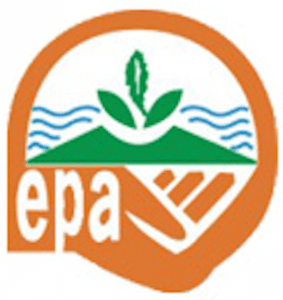National Methane Roadmap for Ghana begins
 The Environmental Protection Agency (EPA) has commenced a programme to develop Ghana’s National Methane Roadmap (G-MRAP), a systematic and collaborative effort to identify the current sources of methane emissions in the country.
The Environmental Protection Agency (EPA) has commenced a programme to develop Ghana’s National Methane Roadmap (G-MRAP), a systematic and collaborative effort to identify the current sources of methane emissions in the country.
The G-MARP will propose effective actions to reduce methane and outline the steps for implementation to create the desired transformational socioeconomic outcomes.
Madam Ophelia Mensah Hayford, the Minister of Environment, Science, Technology and Innovation, addressing stakeholders at an inception meeting, said the focus would be on methane sources in oil and gas, agriculture, and waste sectors.
Funded by the Climate and Clean Air Coalition (CCAC), with technical support from the Stockholm Environment Institute (SEI), the meeting sought to solicit feedback on the roadmap outline and content, and assign stakeholder involvement.
Madam Hayford said global methane emissions were surging faster than at any time in human history and steps towards its reduction would be an effective way to reducing near-term global warming.
Ghana’s total greenhouse gas emissions was estimated to be 51.8 million tonnes of carbon dioxide equivalent in 2021, 12 per cent higher than the 2019 levels.
The energy sector, the Minister noted, remained the largest source of methane since 2010, contributing averagely 41 per cent of the total national emissions.
“Cutting emissions requires deliberate planning to target each sources or activity type and importantly all forms of gases, with attention to creating the needed transformational socio-economic outcomes,” she said.
“Methane is a powerful greenhouse gas and a short-lived climate pollutant, which causes 80 times more global warming than carbon dioxide.”
Madam Catalina Etcheverry, an official from the CCAC Secretariat, said cutting methane would boost health, energy, food security, and economic development.
Methane was a precursor of tropospheric ozone, a powerful air pollutant linked with roughly one million premature deaths per year due to respiratory diseases.
Tropospheric ozone, Madam Etcheverry said, was responsible for the loss of five to seven per cent of staple crops annually, contributing to food insecurity.
Meeting the Global Methane Pledge target would prevent 255,000 premature deaths annually, 775,000 asthma-related hospitalisations and 73 billion hours of lost labour due to extreme heat, she noted.
Dr Saeed Abdul-Razak, Head, Environment and Climate Cluster, United Nations Development Plan (UNDP) Ghana, said there were investment plans in the waste sector being developed jointly with respective agencies.
“We believe that the existence of a methane roadmap will benefit execution of Ghana’s plan towards emission reductions, and will play a key role in the next cycle of Nationally Determined Contributions (NDCs) updates, which will further drive green investments in several development sectors,” he said.
The UNDP would provide the needed support to contribute to the realisation of Ghana’s Climate ambitions through the NDCs commitments to the UNFCCC, and the National Methane Roadmap.
Source: GNA
